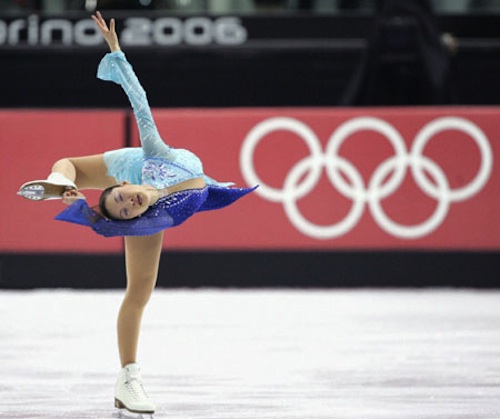I’ve been watching the Olympics semi-consistently and some pretty interesting themes have emerged over the first couple of days. I like skiing, for sure, and seeing Matthias Mayer get a gold was cool (sorry, Bode Miller), but what’s been the most captivating the first few days is figure skating — in team format, duo format, and individual format (the individual medal stuff doesn’t happen until later in the day). Yulia Lipnitskaya was stone cold in her team routine, as was Gracie Gold — and Ashley Wagner is the initial meme of the Olympics.
If you watch a routine (Gold’s U.S. Championships routine is embedded above), you can see they do a lot of really crazy stuff that the human body — especially a 16 year-old girl’s body — shouldn’t necessarily be able to do, but the most stunning to me is always the super-fast spinning rotation. That somehow leads into more skating and even triple jumps. But how? I can barely skate, but let’s assume for a second I could. If I did eight insanely fast rotations and then had to keep skating, I’d fall on my face/ass in about 0.008 seconds. But none of these people do. I guess the first thing to remember is that this is the highest possible level of the world, so you’d hope people aren’t spinning and then collapsing. Then, remember this:
Practice! Coaches generally limit novice figure skaters to just one or two rotations per spin. Only after months and years of training do skaters build up to seven or even eight revolutions. (Skaters must complete eight-revolution spins to secure the highest points.) They progressively work their way up from the three basic spins (upright, sit, camel) to complex variations on those such as the haircutter, the pancake or the doughnut. Although skaters can’t rid themselves entirely of the dizziness sensation, most grow so accustomed to it that they hardly notice it—and it doesn’t negatively affect their routines.
Coaches teach their pupils tricks, like staring at a fixed point at the end of the spin—much like travelers stare at the horizon to stop feeling nauseated. By settling their vision, figure skaters help their brains adapt faster. Some skaters, especially early in their careers, do breathing exercises. During training, they might spin as long as they can, stop to take a deep breath, and then spin again—repeating the pattern until they can handle multiple rotations.
“Rotating on one foot in figure skating is unlike rotating in say, ballet. If you notice in ballet, they sort of jerk their heads back to the same spot with every rotation. That is not the case with figure skating, where the rotations are much faster and up to 30 times or more in one spin combination.”
So, ultimately, it all comes back to Malcolm Gladwell’s much-discussed-and-debated 10,000 hours theory. That’s how you learn to spin super fast while doing crazy stuff with your leg and a sharp blade near your face at the same time.
Here’s a look at the physics:
And here’s an insane, and, er, dizzying montage of spins:

One Comment
Comments are closed.